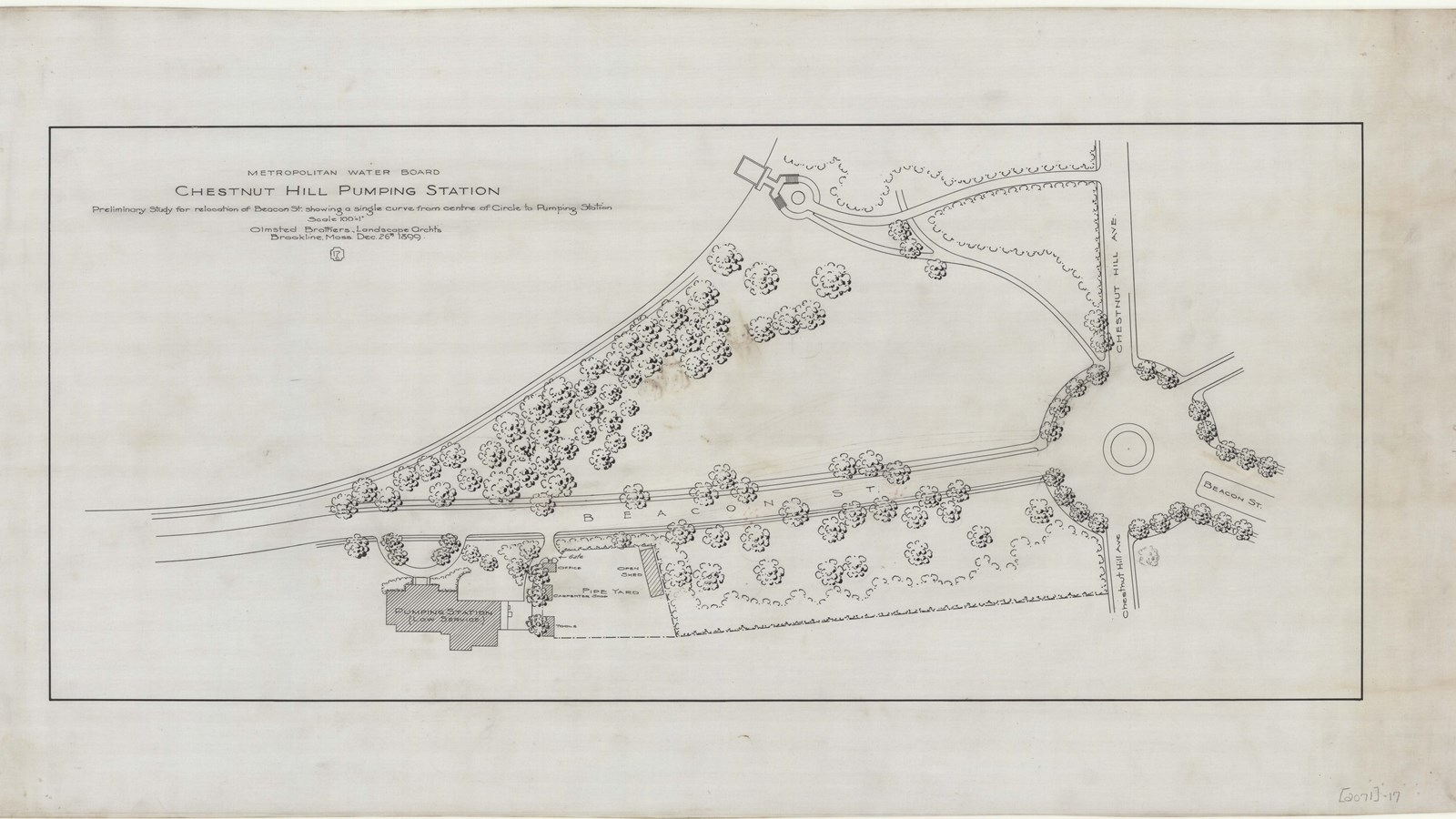Last updated: June 5, 2024
Place
Chestnut Hill Reservoir Pumping Station

Olmsted Archives
Quick Facts
Four years after his 1883 move to Brookline, Frederick Law Olmsted completed his first plan for improving Commonwealth Avenue, linking Beacon Street to the Chestnut Hill Reservoir. This created a loop with the previously laid out Chestnut Hill Driveway, which Olmsted dubbed the Chestnut Hill Circuit, but is also known as the Chestnut Hill Loop.
In his 1887 plan for the Boston Park System, Olmsted believed the Chestnut Hill Loop would connect the Reservoir to other park areas in Boston. After the completion of Commonwealth Avenue, and a redesign of Beacon Street, Olmsted believed the Loop leading to the pleasure grounds at the Reservoir should be part of Boston’s municipal park system.
After Olmsted Sr.’s death, Olmsted Brothers took over all his work. Olmsted Brothers produced plans for a courtyard in front of the Chestnut Hill Reservoir Pumping Station. Additionally, Olmsted Brothers performed the layout and grading for the proposed pipe yard site adjacent to the pumping station.
The Chestnut Hill Driveway was one of the most popular pleasure drives in the Greater Boston area in the late nineteenth and early twentieth centuries. It inspired other cities, like nearby Cambridge, to create pastoral landscapes and pleasure drives around their municipal reservoirs.
Source: "Summary History and Significance," Mass.gov
For more information and primary resources, please visit:
Olmsted Research Guide Online
Olmsted Archives on Flickr
Olmsted Online
In his 1887 plan for the Boston Park System, Olmsted believed the Chestnut Hill Loop would connect the Reservoir to other park areas in Boston. After the completion of Commonwealth Avenue, and a redesign of Beacon Street, Olmsted believed the Loop leading to the pleasure grounds at the Reservoir should be part of Boston’s municipal park system.
After Olmsted Sr.’s death, Olmsted Brothers took over all his work. Olmsted Brothers produced plans for a courtyard in front of the Chestnut Hill Reservoir Pumping Station. Additionally, Olmsted Brothers performed the layout and grading for the proposed pipe yard site adjacent to the pumping station.
The Chestnut Hill Driveway was one of the most popular pleasure drives in the Greater Boston area in the late nineteenth and early twentieth centuries. It inspired other cities, like nearby Cambridge, to create pastoral landscapes and pleasure drives around their municipal reservoirs.
Source: "Summary History and Significance," Mass.gov
For more information and primary resources, please visit:
Olmsted Research Guide Online
Olmsted Archives on Flickr
Olmsted Online
